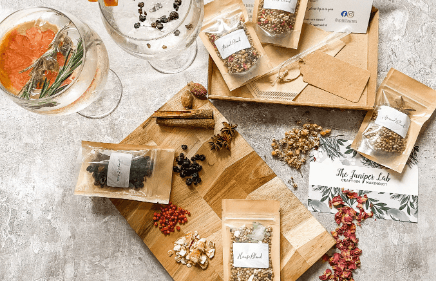Gin is a popular spirit that has been around for centuries. It’s a versatile drink that can be enjoyed independently or as a key ingredient in classic cocktails like the martini, gin and tonic, and the Negroni. So if you’re a gin enthusiast looking to take your love of the spirit to the next level, you may be longing to make your own gin at home. And this article will explore the art of DIY gin making and provide a step-by-step guide to creating your unique blend of botanicals.
The History of Gin
Gin’s long and fascinating history dates back to the 17th century when it was first distilled in Holland. Since then, gin has become a popular spirit worldwide, with many countries having unique styles and flavours.
Gin’s popularity surged in the 18th century in England when it became known as “mother’s ruin” due to its high alcohol content and adverse societal effects. However, this did not stop people from enjoying it; gin has remained a favourite spirit ever since.
In recent years, the craft distillery movement has led to a resurgence of interest in gin, with many people seeking out a unique and artisanal blend.
The Basics of Gin Making
Gin distils a neutral spirit with juniper berries and other botanicals. The botanicals used vary widely; combinations can create different flavours and aromas. Generally, gin must contain juniper as its predominant flavour and include a range of other botanicals, such as coriander, citrus peel, and angelica root.
Equipment Needed
You’ll need a few essential pieces of equipment to make your gin. These include a large glass jar or bottle, a copper still or a stove-top distiller, a thermometer, and a hydrometer. You’ll also need a selection of botanicals and a neutral spirit such as vodka.
Choosing Your Botanicals
One of the most exciting parts of making your gin is choosing the botanicals to include in your blend. It is where you can get creative and experiment with different flavours and aromas. Some popular botanicals include juniper berries, coriander seeds, citrus peels, cardamom pods, and angelica root.
The Distillation Process
The distillation process is where the magic happens. Add your chosen botanicals to a large glass jar or bottle and pour in the neutral spirit. Allow the mixture to steep for a few days, occasionally stirring to distribute the flavours evenly. Once the steeping process is complete, you must distil the mixture to extract the essential oils and create your gin.
Flavour Profiling and Blending
Once you’ve distilled your gin, you’ll need to taste it and make any necessary adjustments to the flavour profile. It is where you can get creative and experiment with different botanicals and flavour combinations. Try blending different batches of gin to create a unique and complex flavour profile.
Bottling and Labeling
Once you’ve perfected your gin recipe, it’s time to bottle and label your creation. You can use a traditional gin bottle or get creative with your packaging. Consider adding a custom label with your gin’s name and any unique details about the flavour profile or ingredients.
Enjoying Your DIY Gin
Now that you can make your own gin, it’s time to sit back, relax, and enjoy your creation. You can savour it or use it as a base for your favourite cocktails. Invite friends and let them try your homemade gin – they may even ask you to make them their bottle!
Making your gin is a fun and rewarding experience that allows you to experiment with different botanicals and flavours. With a few essential pieces of equipment and some creativity, you can create a unique blend of gin tailored to your taste preferences. So, what are you waiting for? Start your gin-making adventure today!



